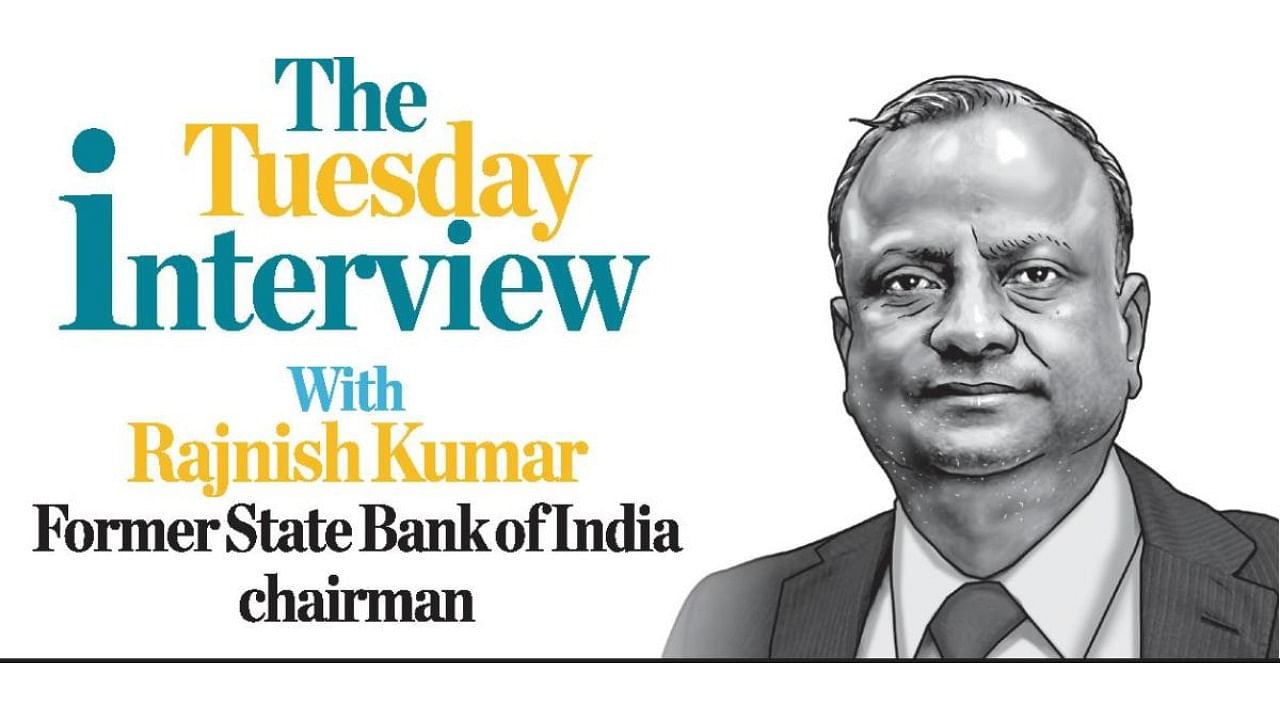
Former State Bank of India chairman Rajnish Kumar, who has recently joined BharatPe as the chairman of its board, says legacy banks and new-age financial technology (fin-tech) companies could create a win-win situation by collaborating. Kumar, who recently wrote the book The Custodian of Trust, spoke to DH’s Annapurna Singh.
Your tenure as chairman of SBI coincided with a tumultuous time in the financial sector – from NPAs to bank and shadow banks’ failures all around you. What is the state of NPAs now?
There is some setback on the non-performing loans front because of the pandemic. One key difference is that the impact is more on the unsecured retail and SME (loans) portfolio. The situation is therefore more manageable. The Emergency Credit Line Guarantee Scheme (ECLGS) of the Government of India and need-based forbearance by the Reserve Bank of India by permitting restructuring of the stressed accounts are also helping the banks manage the NPA situation. Corporate and agriculture loans have largely remained unimpacted. The NPA was at a very high level – about 25-30% of the corporate loan book at the time of the 2015 Asset Quality Review (AQR), which shook the banks. The balance sheets of the banks are in a much better shape to deal with the NPA situation arising out of Covid-19.
In your book The Custodian of Trust, you have written that dealing with Jet Airways was one of the biggest challenges you faced during your tenure. Somehow private airlines in India have generally not done well. Is there an inherent problem with the airline business as a whole?
Worldwide, the airlines business is considered to be a difficult business. No one knows this better than Richard Branson, the founder of Virgin Atlantic, who said, “the quickest way to become a millionaire in the airline business is to start off as a billionaire.” Over-capacity in relation to demand leads to under-recoveries and is one of the main reasons for the failure of airlines worldwide. Capacity addition continues to be pushed by aircraft manufacturers by providing cheaper and innovative financing solutions. High taxes on aviation turbine fuel in India add to the woes of airlines in India. Apart from financing costs, fuel is a major expense item for airlines.
When Yes Bank failed, you were chairman of SBI, which came forward to rescue the lender along with a few other private sector banks. Do you see Yes Bank stabilising anytime soon?
Any institution having a situation like Yes Bank at the time when rescue efforts were put in would take about three years at the minimum. We are mid-way and my hope is that within 18 to 24 months, it will emerge as a fairly strong bank if there are no more external shocks like Covid-19. The rescue of Yes Bank in such a short time is unprecedented.
You have talked in your book about the core issue of poverty and how it is the biggest challenge for India. Do you have any solutions in mind at a time when Covid has pushed millions of Indians into poverty?
The fight against poverty gained momentum only after 1991 when economic reforms were initiated in the country. Stepping up the GDP growth rate to at least 8% is needed, which would be possible by increasing the rate of investment. The private sector in the country would need to play a bigger role as governments, both central and state, have stretched financial positions and have many other priorities.
You have also talked about certain logistical challenges that the RBI and the banks faced during demonetisation. Looking back, do you think it could have been done in a better way?
In a decision like demonetisation, utmost secrecy is required and wider consultation is not possible and therefore chaos is bound to happen. One can suggest better ways only in the hindsight, which I have tried to document. Also, demonetisation is not done frequently so we need not worry too much at this stage, but it may not be a bad idea to keep a Standard Operating Procedure (SOP) in place for RBI and banks based on the learnings from the last exercise.
You have recently joined the board of fin-tech firm BharatPe as its chairman. Do you think the bank fin-tech partnerships can change the way lending is done in India?
Fin-techs are doing a lot of process innovation keeping customer convenience in mind. Starting from a clean slate is an advantage which fin-techs have, apart from agility. The legacy banks have the scale and the ability to mobilise funds from depositors. It can be a win-win situation for all stakeholders if both collaborate and play on respective advantages.
